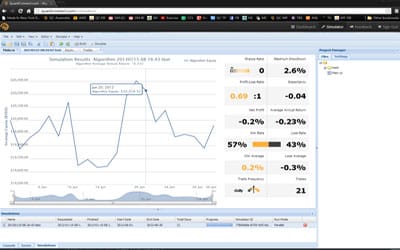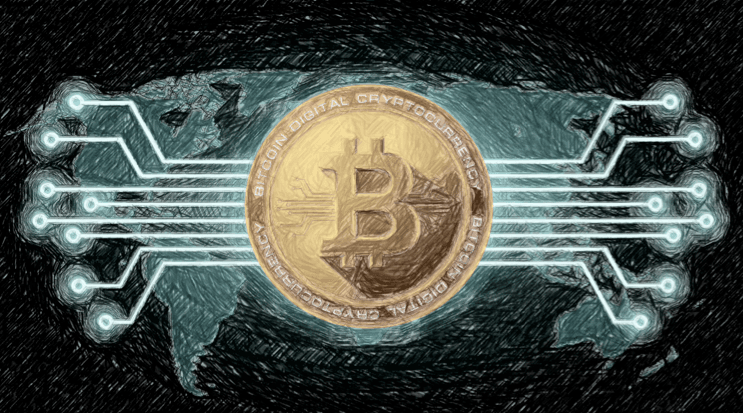Today Wall Street, The financial Citi center in London, and Hong Kong Financial centers are somehow operated by humans with the support of thousands of financial algorithms. These technology mathematical robots, crawlers of big data, sentiment and other information are creating a new Finance and Technology landscape that very few people are aware. These algorithms are now responsible for most of the overal worlwide trading and have created a new market technological financial ecosystem, sometimes bull and bear and volatile, unpredictable, and impossible for humans alone to comprehend.
The entire financial system is now run by sophisticated technologies. Over the last 30 years and special in the past decade, FinTech systems have been developed to augment the capacity of the financial industry and in particular algorithmic trading has somehow overtaken the way the capital markets, and special the trading industry operates. At the moment both the single desk of a financial startup hedge fund to the gilded halls of the big players such as Morgan Stanley, Goldman Sachs, Citi, Barclays, or most of the major Forex traders players are using computer code and big data crawlers that are now responsible for most of the activity on the financial global markets.
In some studies, some estimates, states that computer-aided high-frequency trading now accounts for about 75 percent of total trade volume. Increasingly, the capital market’s ups and downs are determined not just by macro data and economic stats, but also by traders competing to see who has the best mili second information or sharpest business mind with the support of massive numbers of financial algorithms scanning big amounts of big data and sentiment in order to deliver the best profit margins.
The major players in the trading and special in the forex trade – namely the inter-bank traders – have been using algorithmic (also known as quant) trading techniques for a few years now. These are automated trading mechanisms that are mainly designed to take lots of quick profits from very short-term trades, with the positions often being open for just a few seconds or less.
This hasn’t put independent traders at that much of a disadvantage, as most tend to observe longer-term swing trading strategies, and the vast increase in trading activity has had some benefits in terms of increased liquidity and price stability. However, it has made it much more difficult to make profits from short-term manual trades, which has left many independent traders looking for ways to incorporate algorithmic trading into their own strategies. For the lowdown on algorithmic trading, check out the infographic at the bottom of this article.

To a certain extent, the popular MetaTrader 4 platform, together with its vast library of open-source trading algorithms and scripts, has provided this facility. However, in order to back-test strategies, traders had to pay a high price to access detailed market data, and often lacked the computing power to process this in a timely fashion.
Algorithmic Trading – Explained
Bellow an excellent infographic by QuantConnect team that displays and defines the context of Algorithmic Trading and uses some key examples and research. Some numbers to think only 25% of the global trading is effected by humans as we speak.
Article written with the contribution of Paul Milnes.
Dinis Guarda is an author, academic, influencer, serial entrepreneur and leader in 4IR, AI, Fintech, digital transformation and Blockchain. With over two decades of experience in international business, C level positions and digital transformation, Dinis has worked with new tech, cryptocurrencies, drive ICOs, regulation, compliance, legal international processes, and has created a bank, and been involved in the inception of some of the top 100 digital currencies.
Dinis has created various companies such as Ztudium tech platform a digital and blockchain startup that created the software Blockimpact (sold to Glance Technologies Inc) and founder and publisher of intelligenthq.com, hedgethink.com, fashionabc.org and tradersdna.com. Dinis is also the co-founder of techabc and citiesabc, a digital transformation platform to empower, guide and index cities through 4IR based technologies like blockchain, AI, IoT, etc.
He has been working with the likes of UN / UNITAR, UNESCO, European Space Agency, Davos WEF, Philips, Saxo Bank, Mastercard, Barclays and governments all over the world.
He has been a guest lecturer at Copenhagen Business School, Group INSEEC/Monaco University, where he coordinates executive Masters and MBAs.
As an author, Dinis Guarda published the book 4IR: AI, Blockchain, FinTech, IoT, Reinventing a Nation in 2019. His upcoming book, titled 4IR Magna Carta Cities ABC: A tech AI blockchain 4IR Smart Cities Data Research Charter of Liberties for our humanity is due to be published in 2020.
He is ranked as one of the most influential people in Blockchain in the world by Right Relevance as well as being listed in Cointelegraph’s Top People In Blockchain and Rise Global’s The Artificial Intelligence Power 100. He was also listed as one of the 100 B2B Thought Leaders and Influencers to Follow in 2020 by Thinkers360.







































